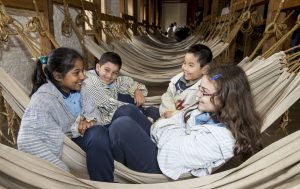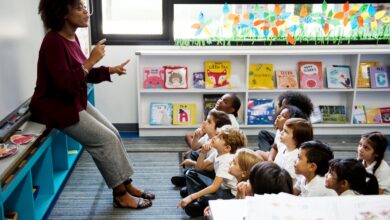Unlocking History removes barriers to experiential learning

To teach children about the history of where they live is a wonderful thing. It puts their place – their home, their school and the surrounding landscape – into context and provides them with narratives that connect them to their place even if it is not where they, or their family, were born.
The best way to teach them is to immerse them in it, to transport them back to the past and make it real by teaching them in the actual places where ‘history’ happened.
This statement is inspired by Appin Public School located in the south western outskirts of Sydney. This was one of the first government funded schools established in the colony following the passing of the Public Schools Act in 1866. 150 years later the original sandstone building that housed both the school room and principal’s residence is still standing, now unoccupied and waiting on restoration work. According to the school’s principal, the students did not relate to the historical significance of this building and its connection to the Australian colonial story until they visited The Rocks in Sydney and saw the familiar sandstone architecture. They realised the stories that they were being told about the narrow cobbled laneways surrounding Sydney Harbour were also the stories of their own area.
For many primary aged children from disadvantaged schools in NSW, the opportunity to engage with Australian history in this way is not possible due to their distance from the places where this history can be taught in such a tangible way – museums, old houses, wind-blown sandstone structures, resilient homesteads, convict monuments, national parks with mountain ranges and eroded clay formations surrounded by footprints from the Ice Age to name a few. This is because distance means the added financial barrier of the cost of transport to get the children to these places and immerse them in quality education programs that bring history to life.
In July 2015, the NSW Office of Environment and Heritage funded Unlocking Heritage, a two year pilot project initiated to remove the barrier of distance and the associated transport costs for NSW primary school children from disadvantaged and rural and regional areas. The financial assistance was offered in two streams:
- The Unlocking Heritage Travel Subsidy available to NSW primary schools with an FOEI score of 100 or more, (a NSW DEC socio-economic loading based on a school’s overall Family Occupation and Education Index score, with higher scores indicating a greater level of need) providing up to $20 per student towards their transport costs to attend one or more of the 48 education programs at 23 of the state’s most significant heritage sites managed by Sydney Living Museums (SLM) and the NSW National Parks and Wildlife Service (NPWS);
- The Unlocking Heritage Convict Sleepover available to NSW rural and regional schools, providing a travel subsidy and free attendance (including food and accommodation) to an overnight school excursion at the UNESCO World Heritage listed Hyde Park Barracks Museum.

The ultimate aim of Unlocking Heritage was to offer this assistance to at least 20,000 children over the two streams of the project in order to test the viability of this financial assistance and evaluate the relevance of these educational experiences. By the end of the two years, almost 22,000 students participated; and with the remaining funds from the original grant another 9,000 have continued to utilise the travel subsidy, taking the results beyond the project forecast figures and highlighting the relevance of this initiative.
Focusing on the Travel Subsidy stream that represented over 85% of the participants, over two thirds of the students came from the western and south western suburbs of Sydney, with the remaining children from regional NSW. The communities in these areas are predominantly from indigenous, multicultural and refugee backgrounds; and a majority of these schools, like Appin Public School, utilised the funding to access education programs at heritage sites in Sydney.
Feedback from teachers illustrated the connection between these experiences and the potential to provide their students with a greater sense of belonging through an increased awareness and appreciation of Australian history.
Many teachers also expressed the importance of this initiative as an opportunity for their students to connect with Australian culture and histories as so many of these children are isolated within their local community and social experience.







